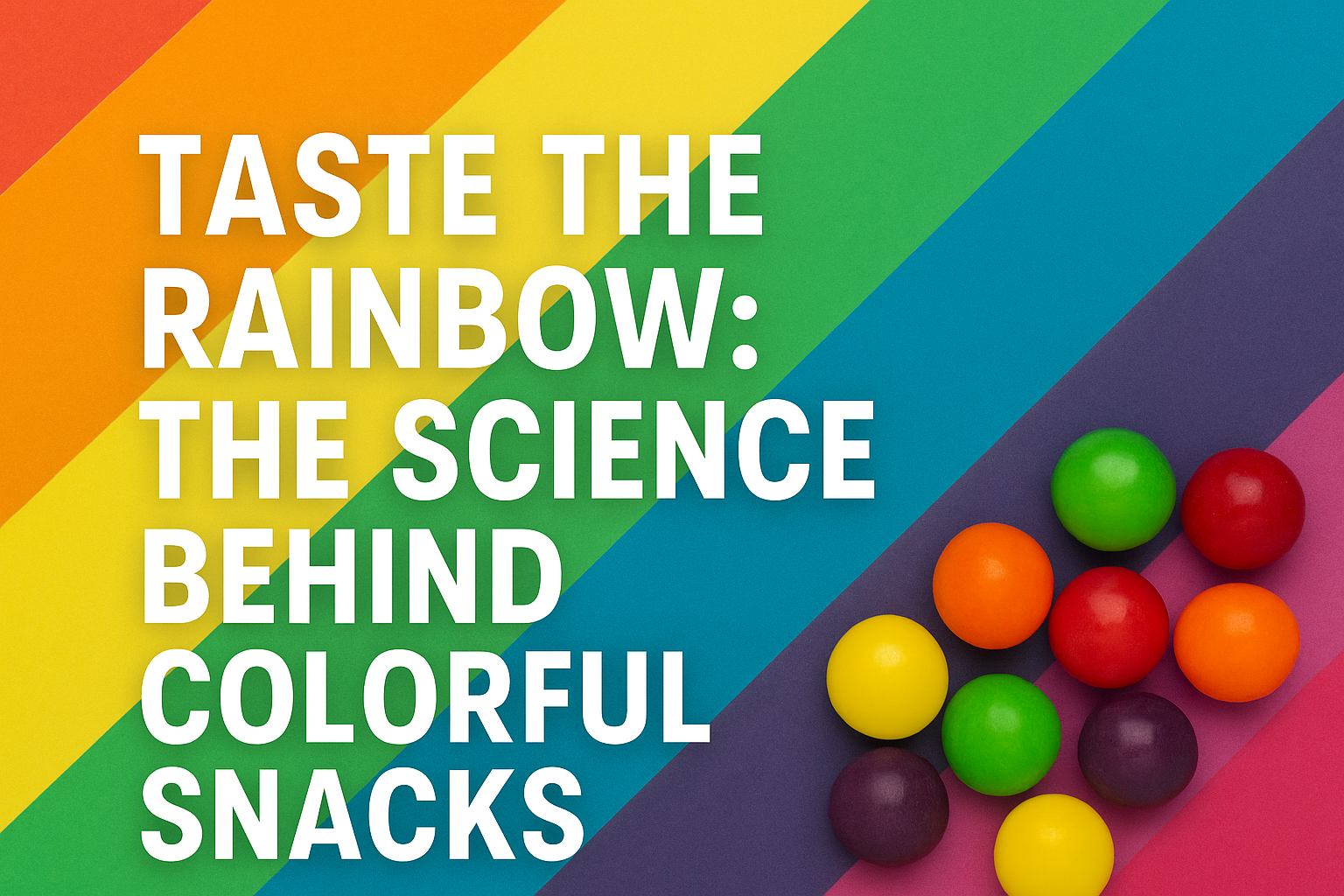🌈 Why Are Snacks So Colourful?
Ever wondered why some of the most popular snacks in the world are bursting with bold, vibrant colours? From electric blue chips to neon gummy candies, the snack aisle is a feast for the eyes before it’s ever a treat for the taste buds. At InOutSnackz, we’ve noticed that some of our most eye-catching products fly off the shelves—and it’s no coincidence.
Let’s peel back the wrapper and dive into why colour matters so much in the world of snacking, and how global snack brands use colour to connect with customers and boost cravings.
🎯 The Psychology of Snack Colours
It’s not just marketing hype—colours really do influence how we perceive taste and quality.
- Red and yellow stimulate appetite and excitement (hello, hot chips and spicy ramen).
- Green suggests freshness or sourness (like matcha KitKats or wasabi peas).
- Blue and purple add a futuristic or rare quality (think of limited-edition sodas or ube snacks).
- Pink evokes sweetness, nostalgia, and novelty (popular in strawberry Pocky or lychee gummies).
These associations often transcend borders, but local cultures sometimes perceive colours differently, which leads to snack branding tailored by region.
🧪 Colour vs. Flavour: Trick or Treat?
Some brands lean into colour-flavour dissonance—when the snack’s colour doesn’t match the expected taste—to grab attention. A bright green soda might be melon-flavoured in Japan, while a similar colour could mean lime in the Caribbean.
At InOutSnackz, we stock a variety of international snacks that play with this balance, like:
- Lay’s Stax Seaweed Chips (China) – olive green packaging with an earthy, salty flavour.
- Pejoy Ube Cream-Filled Sticks (Philippines) – rich purple tones that scream “indulgence.”
- Trolli Planet Gummi (Germany) – a blue outer shell, revealing a gooey, fruity interior.
- Hi-Chew Fantasy Mix (Japan) – pastel hues with rare flavors like Blue Hawaii and Cotton Candy.
These snacks engage all the senses, starting with the eyes.
🌍 A Global Palette: Cultural Colour Preferences
What sells in one country might flop in another, all based on cultural colour cues:
- Japan tends to favour seasonal colours (cherry blossom pink in spring, chestnut brown in autumn).
- India leans into saffron, gold, and deep reds—colours associated with richness and celebration.
- Scandinavian markets often prefer minimalist, earthy palettes that suggest purity.
- North America is all about contrast and brightness—bold colours for big flavours.
Global snack companies often tweak packaging and colour palettes depending on the market. For example, Pepsi’s Japan-exclusive Sakura edition comes in pink hues with floral motifs, while Doritos in Korea may be darker with spicier flavour cues.
🛒 What It Means for Snack Lovers
When shopping for international snacks, colour isn’t just about aesthetics—it can offer clues about what to expect, or surprise you completely.
Here’s how to snack smarter with colour:
- Trust bold colours for bold flavours.
- Don’t judge a snack by its wrapper—be open to surprises.
- Look for colour cues that reflect the season or region.
- Try snacks with unexpected colour-flavour combos—they’re often the most fun!
At InOutSnackz, we curate snacks not just for their taste, but for their experience. Our goal is to bring visual, flavourful adventures straight to your pantry.
🎉 Final Bite: Colour Isn’t Just for Kids
Sure, colourful snacks may look fun—but they’re also a masterclass in food design and global culture. Whether you’re into pastel gummies, emerald green matcha, or eye-popping blue candies, there’s a snack out there that speaks your colour language.
👉 Visit inoutsnackz.com or stop by our Belleville store to discover your next vibrant snack obsession. Don’t forget to snap a pic—these snacks were made to be seen AND devoured.

